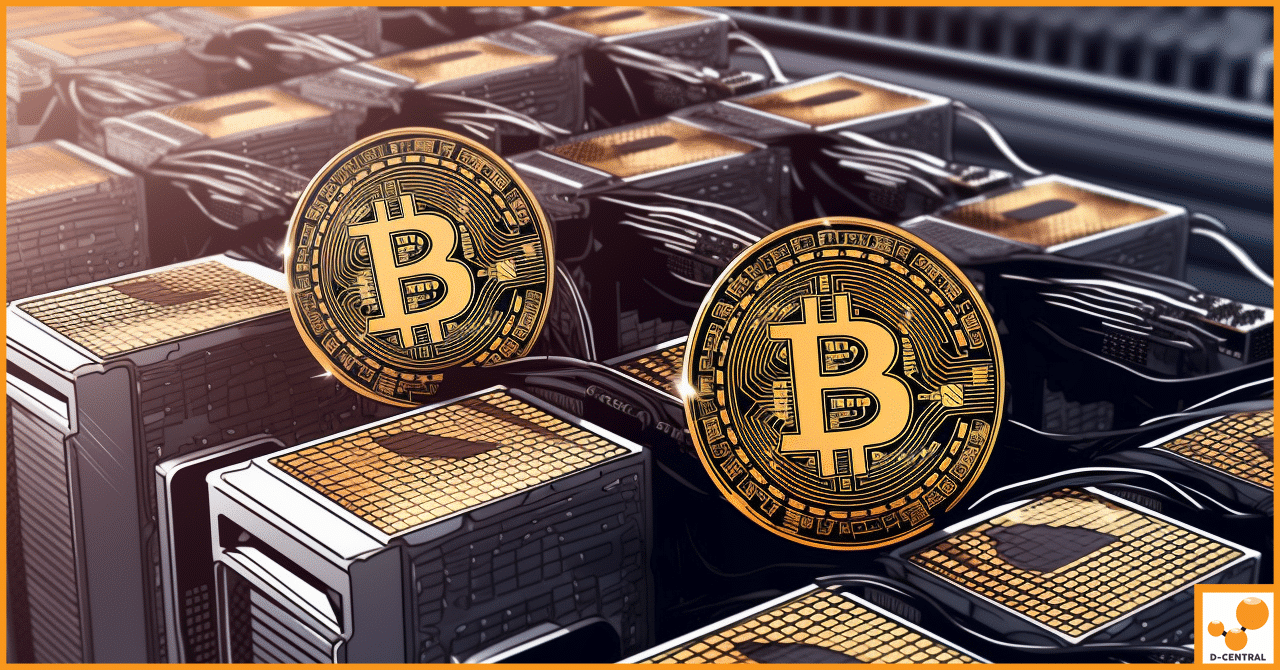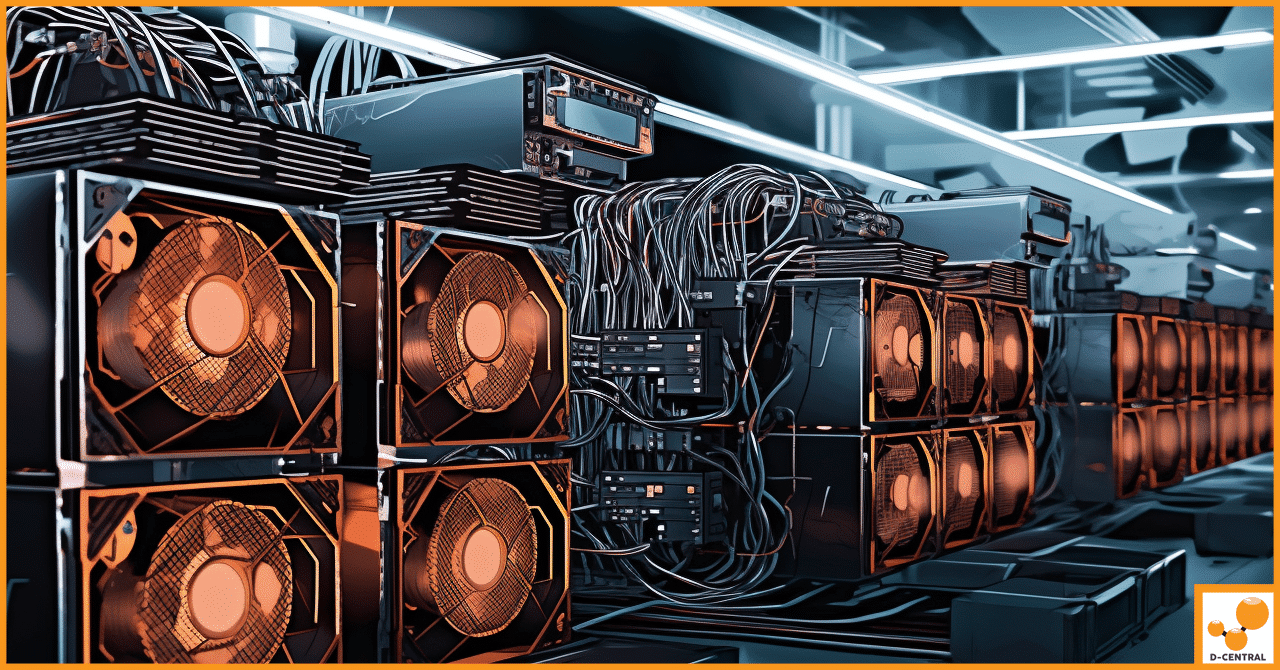
Understanding How Bitcoin Fits Into the Global Economic Landscape After 1971
In a world of fiat currencies that are prone to inflation and government overreach, Bitcoin stands out as an alternative
4479 Desserte Nord Autoroute 440, Laval, QC H7P 6E2

Bitcoin, a decentralized network, functions seamlessly thanks to the tireless work of miners who secure its transactions and mint new bitcoins. This complex ecosystem operates on the foundational principles of block subsidies and transaction fees. Occasionally, a unique phenomenon occurs where the transaction fees surpass the block subsidy, creating a rare but pivotal milestone in the Bitcoin universe. Understanding these events allows us to glimpse into the future of Bitcoin mining and the longevity of this revolutionary technology.
Understanding the interplay between block subsidies and transaction fees is fundamental to comprehending the functioning and economics of Bitcoin. These two mechanisms serve as the primary incentives for miners to maintain the network’s security and integrity.
The block subsidy is the amount of newly minted bitcoins awarded to the miner who successfully adds a new block to the blockchain. The block subsidy serves as a mechanism for introducing new bitcoins into the system, effectively controlling inflation within the Bitcoin network. This subsidy follows a predictable schedule, halving approximately every four years in an event known as the “Bitcoin halving.” This halving event is built into the Bitcoin code and has occurred three times since Bitcoin’s inception in 2009. Initially, the block subsidy was 50 bitcoins. The first halving in 2012 reduced it to 25 bitcoins, the second in 2016 to 12.5 bitcoins, and the third in 2020 to the current reward of 6.25 bitcoins. The next halving, expected in 2024, will reduce the block subsidy to 3.125 bitcoins.
While the block subsidy is fixed and predictable, transaction fees are a different story. These fees are not preset and can fluctuate based on a variety of factors. When a Bitcoin user sends a transaction, they can choose to include a transaction fee. This fee serves as an incentive for miners to include that transaction in the block they are working to validate and add to the blockchain. The higher the fee, the more likely the transaction will be included in the next block.
The transaction fee mechanism is a market-driven process. As Bitcoin blocks have a size limit (currently 1MB for standard blocks, but can be up to 4MB with a full complement of SegWit transactions), they can only include a finite number of transactions. When more transactions are waiting to be confirmed than can fit in a single block, miners prioritize those with higher transaction fees. Therefore, when the network is busy, users can expedite their transactions by choosing to pay a higher fee.
Together, the block subsidy and transaction fees make up the total block reward for miners. The block subsidy provides the majority of the reward initially, but as the subsidy reduces with each halving, transaction fees become increasingly significant. Over time, as the block subsidy continues to decrease, the sustainability of Bitcoin’s security model will depend more and more on transaction fees. This ongoing shift presents both challenges and opportunities for the future of Bitcoin.
The phenomenon where transaction fees exceed the block subsidy is a rare but significant occurrence in the Bitcoin network. Let’s delve into the specifics of these events to better understand their context and implications.
The first instance of this event occurred in July 2016, shortly after the second Bitcoin halving. The halving event reduced the block subsidy from 25 to 12.5 bitcoins. Block number 420249, mined in this period, had transaction fees totaling 13.63 bitcoins, surpassing the block subsidy of 12.5 bitcoins. This was the first-ever block where the fees exceeded the subsidy, marking a pivotal moment in Bitcoin’s history.
This unique occurrence wasn’t a one-off event. It was followed by several other blocks where the transaction fees were higher than the block subsidy, especially during 2016 and 2017. For instance, block number 450665 recorded fees of 13.65 bitcoins against a block subsidy of 12.5 bitcoins.
These events were not random but occurred during periods of high network congestion and fee spikes. The primary driver was the surge in Bitcoin’s popularity and adoption during the 2017 bull market. As more users joined the network and the demand for block space increased, users were willing to pay higher fees to have their transactions confirmed faster, leading to these unique blocks.
The most recent occurrence was recorded in May 2023, following the third Bitcoin halving. This event reduced the block subsidy from 12.5 to 6.25 bitcoins. Block number 788695 made history by recording transaction fees of 6.7 bitcoins, surpassing the block subsidy of 6.25 bitcoins.
This event once again correlated with a period of high demand for block space and limited supply of transactions. Bitcoin was experiencing new highs in price and market capitalization, which attracted more users to the network. The higher demand for block space led users to pay higher transaction fees, resulting in a block where the fees exceeded the subsidy.
These historical occurrences provide a clear illustration of how network congestion, rising popularity, and halving events can lead to blocks where transaction fees surpass the block subsidy. They also provide valuable insights into potential trends and shifts in the Bitcoin network’s economics as it continues to evolve.
These events, although rare, have profound implications for Bitcoin’s future. As block subsidies decrease over time, transaction fees will inevitably become a vital income source for miners. High transaction fees could ensure that miners remain incentivized to secure the network, thus maintaining Bitcoin’s security. However, the challenge lies in maintaining a balance between transaction fees and block subsidy. If fees are excessively high or volatile, miners might not cover their costs, potentially exiting the network and reducing its security.
Several solutions have been proposed to address this balance. Increasing the block size limit could accommodate more transactions per block, reducing congestion and fees. Implementing scaling technologies like SegWit and the Lightning Network could further alleviate these issues. Alternative consensus mechanisms, like proof-of-stake or proof-of-work hybrids, could also be explored to reduce reliance on mining rewards.
The instances where Bitcoin transaction fees exceed block subsidies are rare yet significant events. They offer valuable insights into the challenges and opportunities that lie ahead for Bitcoin. By understanding these events and their implications, we can better appreciate the value of Bitcoin as a decentralized network and support its evolution as a groundbreaking technology. As we move forward, transaction fees will play an increasingly important role in shaping Bitcoin’s future, and we eagerly anticipate the innovations that will arise to address this complex yet fascinating challenge.
DISCLAIMER: D-Central Technologies and its associated content, including this blog, do not serve as financial advisors or official investment advisors. The insights and opinions shared here or by any guests featured in our content are provided purely for informational and educational purposes. Such communications should not be interpreted as financial, investment, legal, tax, or any form of specific advice. We are committed to advancing the knowledge and understanding of Bitcoin and its potential impact on society. However, we urge our community to proceed with caution and informed judgment in all related endeavors.
Related Posts

In a world of fiat currencies that are prone to inflation and government overreach, Bitcoin stands out as an alternative

What would ripple through the Bitcoin market if Satoshi Nakamoto, the shadowy architect behind the world’s premier cryptocurrency, chose to

Bitcoin is created and secured by mining, which involves solving complex mathematical puzzles using powerful computers. This process consumes a